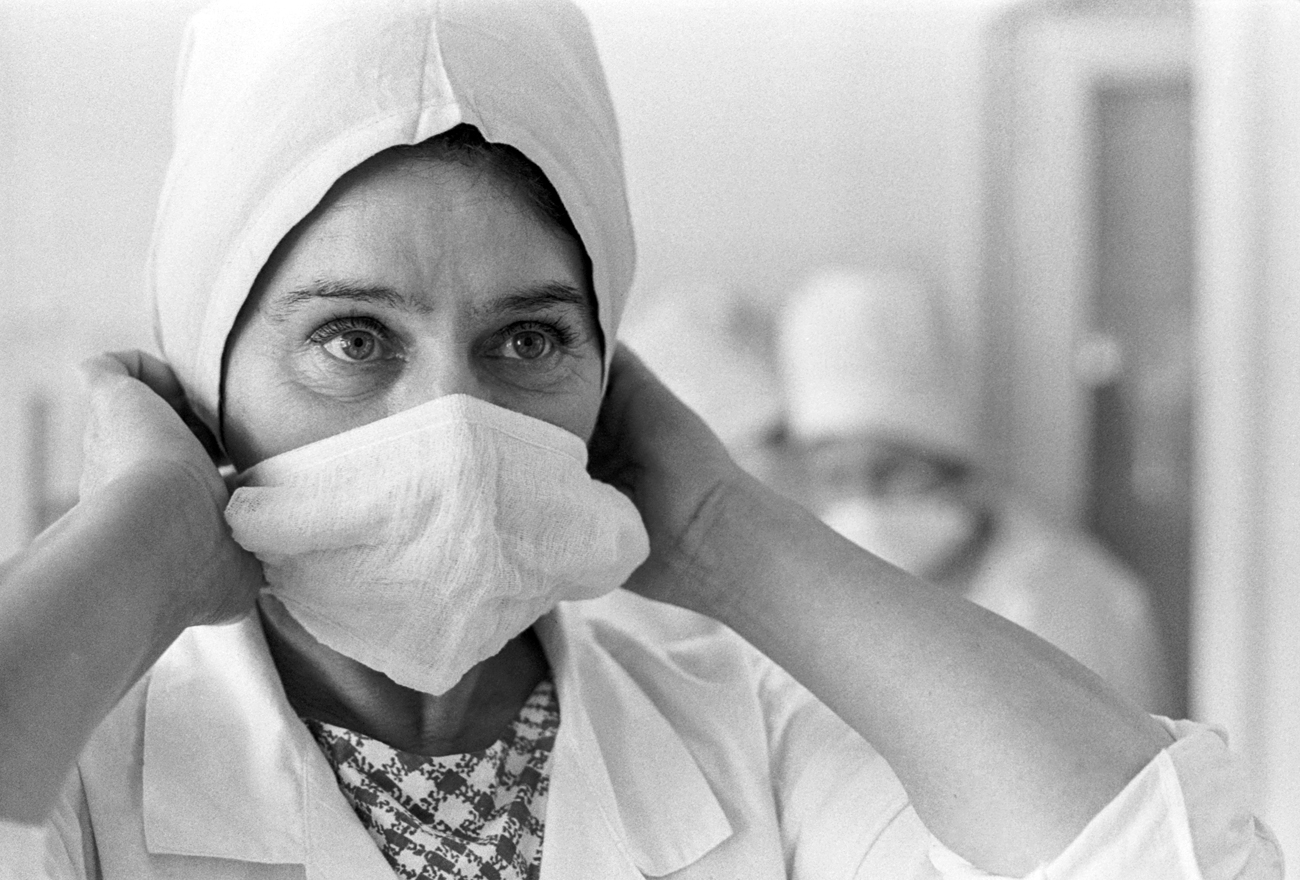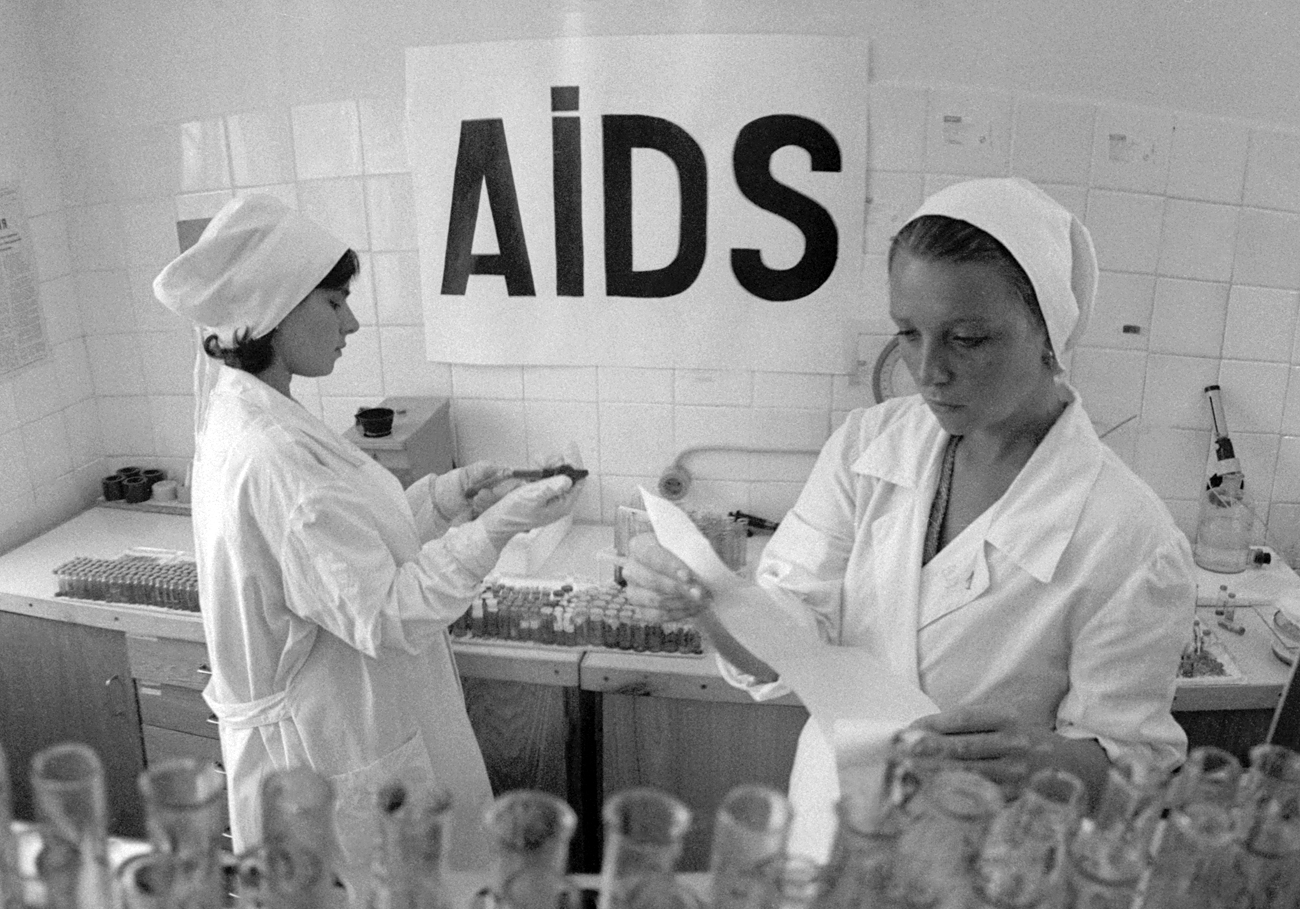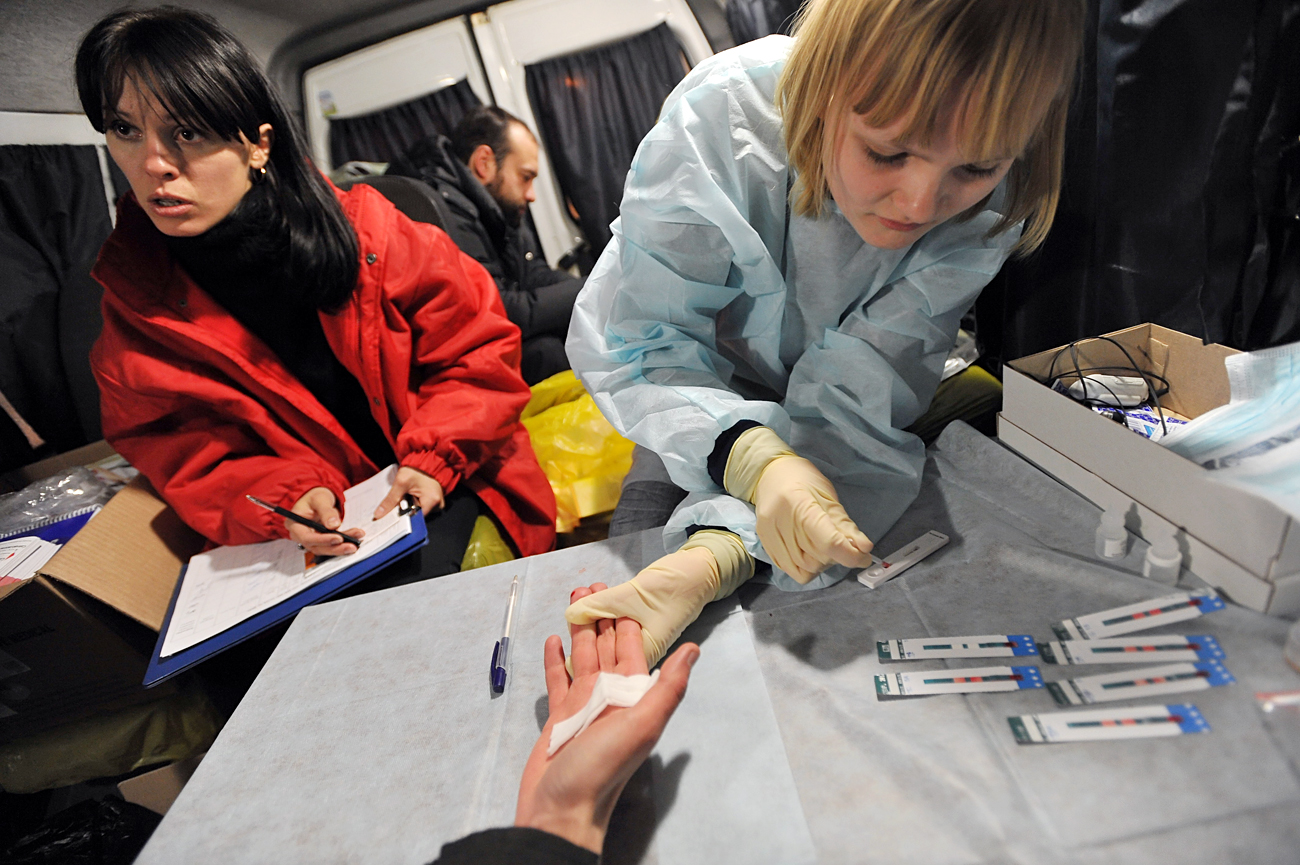
Until the middle of the 1980s for people living in the USSR, HIV was regarded as a "sickness that was spread in the West among prostitutes, homeless people and homosexuals."
I.Shagautdinov/TASSAn HIV epidemic has been raging in Yekaterinburg, one of Russia's largest cities (880 miles east of Moscow) – one out of every 50 residents is now infected with the virus. The news was announced on Nov. 1 by first deputy director of the Yekaterinburg health administration Tatyana Savinova, who revealed that 1,826 people out of every 100,000 are infected – 1.8 percent of the city's population. The situation is not much better in many other parts of Russia. But how did AIDS originally come to the USSR?
Until the middle of the 1980s for people living in the USSR, HIV was regarded as a "sickness that was spread in the West among prostitutes, homeless people and homosexuals."
"In America AIDS has been raging since 1981, this is a Western disease,” said the Russian Republic's health minister Anatoly Potapov on the TV program Vremya in 1986. “We don't have the foundation for this infection spreading since Russia doesn't have drug addicts and prostitution." However, in 1988 the first death from AIDS in the USSR was registered by Professor Andrei Kozlov.
It had been impossible to make the diagnosis earlier – the first screening for HIV in the USSR was done in the summer of 1987. The first USSR citizen to contract HIV was a young man who for some time had worked as a translator from English at a Russian embassy in Africa. By the end of the year 25 of the people with whom he had contact were infected with HIV.
 Anonymous AIDS testing station, Moscow, Sept. 1, 1987. / Source: Vladimir Velengurin/TASS
Anonymous AIDS testing station, Moscow, Sept. 1, 1987. / Source: Vladimir Velengurin/TASS
Blogger Anton Nosik has his own theory of the events. He affirms that he was personally acquainted with the first Soviet HIV carrier. This was an engineer with the surname Krasichkov. The USSR had sent him to Tanzania as part of an industrial construction project. While in Africa, he acquired HIV through sexual intercourse. In 1984 he returned to Moscow and in 1985, realizing that something was wrong with him, he turned for help.
He spent the following several years in Moscow's only (then and now) specialized state hospital and eventually died. Another case of HIV infection occurred in Odessa (now Ukraine). In the fall of 1988 a baby was posthumously diagnosed with AIDS. The mother had contracted the disease through sexual intercourse. This death led to doctors screening more children for HIV.
The Odessa case was followed by an outbreak of the infection in Elista (700 miles southeast of Moscow), the capital of the Kalmykia Autonomous Soviet Socialist Republic. The first identified HIV patients in the city were a female blood donor and her small child. The investigation proved that the child had been infected in the hospital.
After examining the children's hospital in the republic where the child died it turned out that a total of 75 children and four women had been infected with HIV due to the negligence of the medical staff, who used unsterile medical instruments, including syringes and catheters.
One child was born to an HIV-positive mother, whose husband had AIDS. He had acquired it while working in Congo some time earlier, when he had been unfaithful to his wife with several local women. Kalmykia's anti-epidemic service carried out the inspection. According to some witnesses, the hospital's employees used syringes without sterilizing them, just changing the needles. Disposable syringes were still not used on a broad scale back then.
Some children were taken to Volgograd, Stavropol and Rostov-on-Don. This resulted in a new wave of infections. Certain children were in reanimation when they were infected, which accelerated the progression of the infection. By 1990 more than 270 children in the country were HIV-positive.
Soviet Health Minister Yevgeny Chazov admonished the doctors who were responsible for the infections. But no one was punished seriously. However, the victims did not give up. In 2011 they managed to reopen the case. By that time more than half of the infected children in Elista had died.
"Today 44 people out those infected in 1988 receive 22,844 rubles as financial assistance. The assistance is indexed annually in accordance with inflation. Another 16 people receive a monthly amount of 600 rubles from the republic's government for taking care of their sick children,” said Vladimir Shovunov, who at the time was Kalmykia's minister of health and social development.
“Last year the government paid 42,000 rubles to the 12 families of HIV-infected children for burials. This year the same amount went to eight families. But you must understand that the ministry of health and social development can provide assistance to children up to 18 years of age and not to their parents."
In Russia, according to the Federal Scientific-Methodic Center for Prophylactics and the Fight against AIDS, in 2014 there were over 900,000 people with HIV in the country, 60 percent of whom were male.
 A lab assistant taking a blood sample from a patient to conduct rapid HIV testing at a mobile station in Yekaterinburg as part of the HIV awareness events marking World AIDS Day, Yekaterinburg, Dec. 1, 2010. / Pavel Lisitsyn/RIA Novosti
A lab assistant taking a blood sample from a patient to conduct rapid HIV testing at a mobile station in Yekaterinburg as part of the HIV awareness events marking World AIDS Day, Yekaterinburg, Dec. 1, 2010. / Pavel Lisitsyn/RIA Novosti
The prevailing risk factor is drug use with unsterile instruments and the second is heterosexual intercourse. Less than two percent of HIV infection is related to homosexual intercourse, which fell drastically as the cause of infection from 55 to 7 percent in 1995-1996, possibly as awareness of the importance of contraception grew. By 2014 this had fallen to 1.2 percent.
Most HIV-infected patients live in the Irkutsk Region: Almost 1,500 in every 100,000 are infected. The lowest figures – slightly over 500 people – are in Sevastopol (Crimea) and the Moscow Region.
First published in Russian by Gazeta.ru
All rights reserved by Rossiyskaya Gazeta.
Subscribe
to our newsletter!
Get the week's best stories straight to your inbox